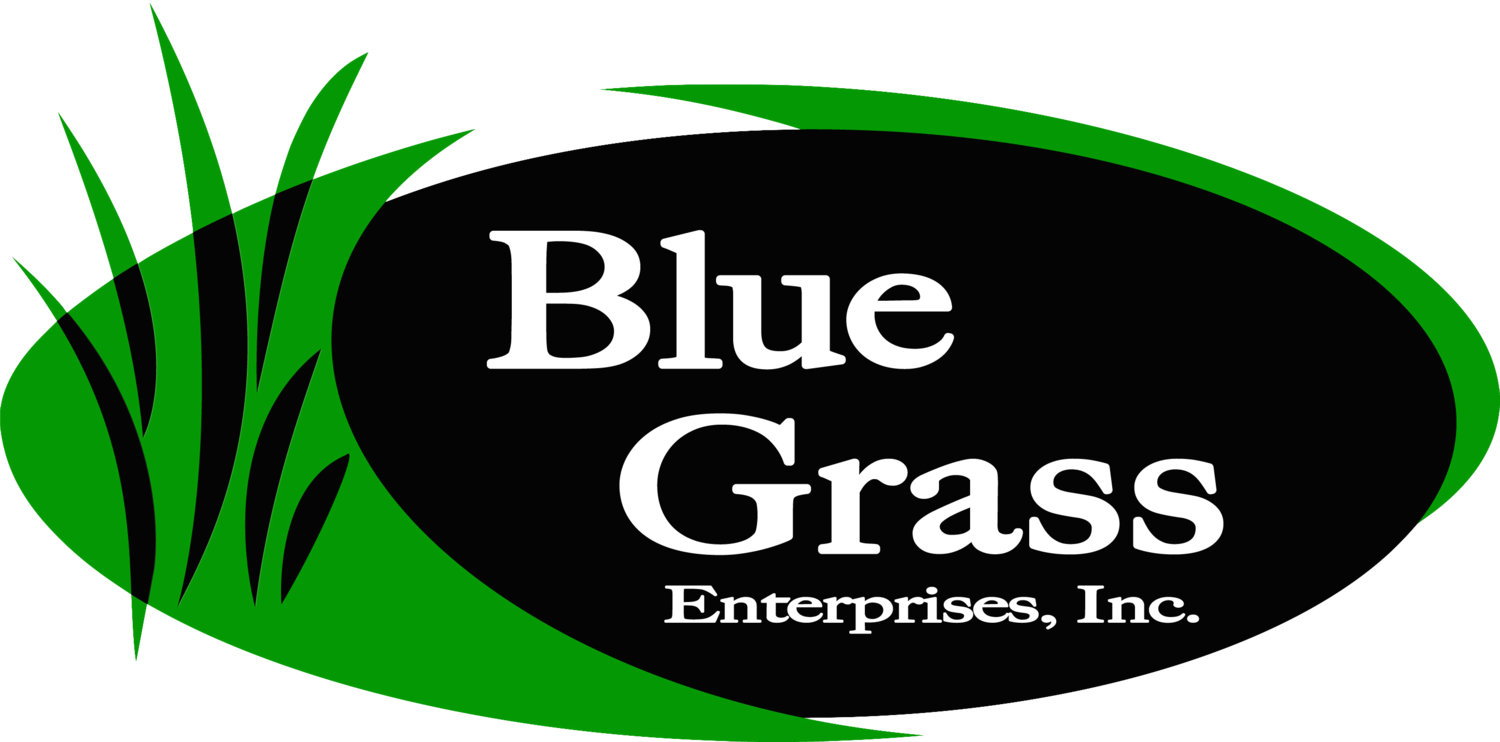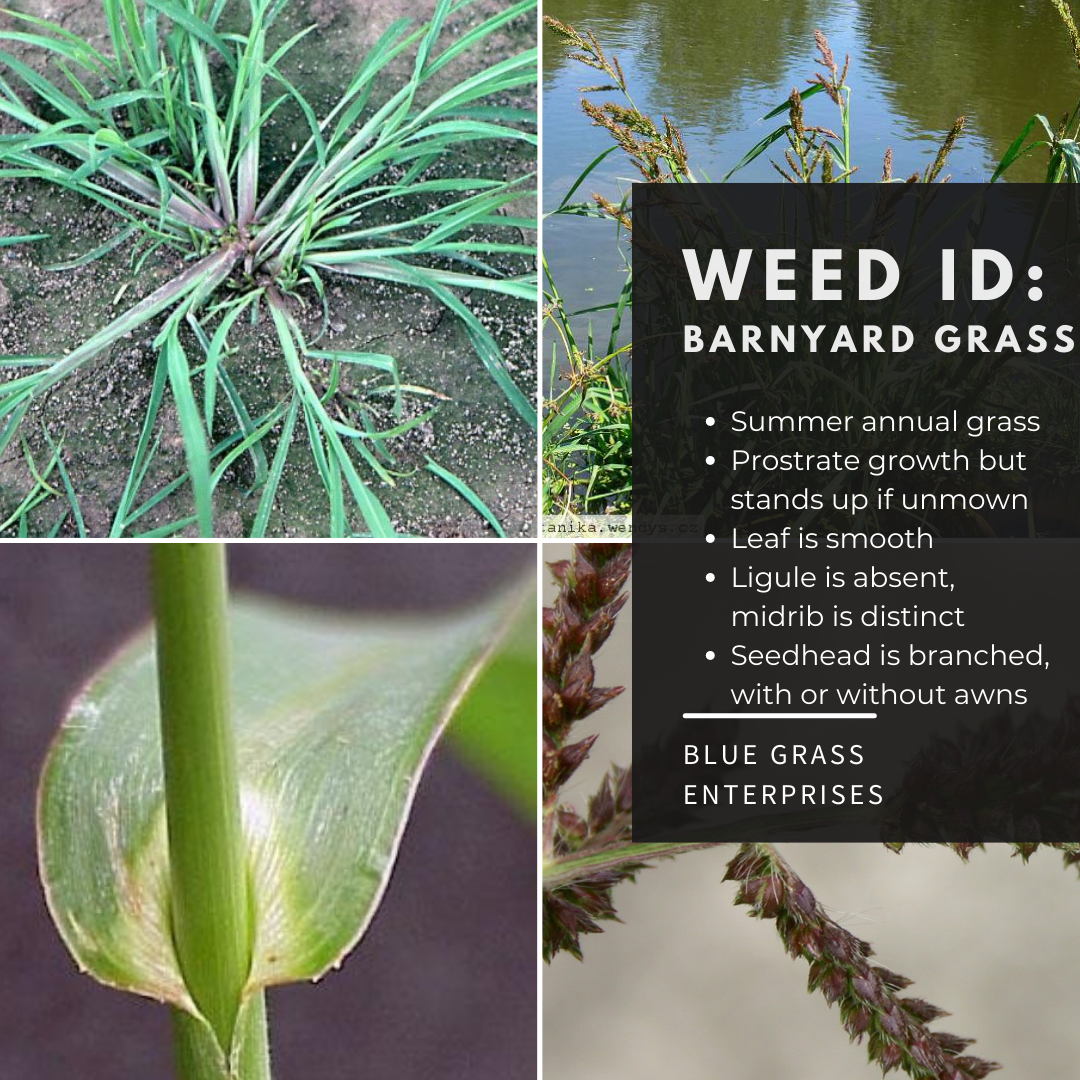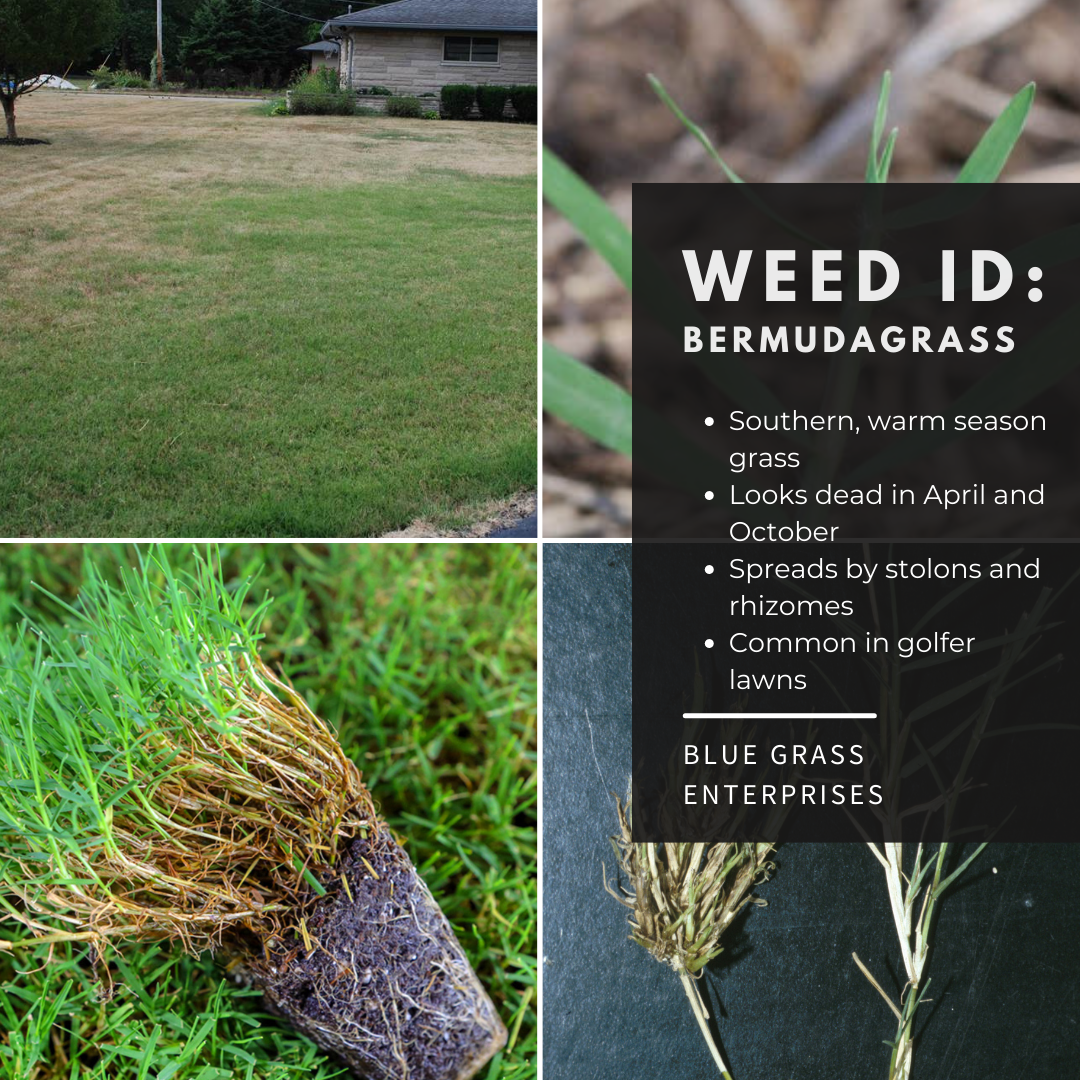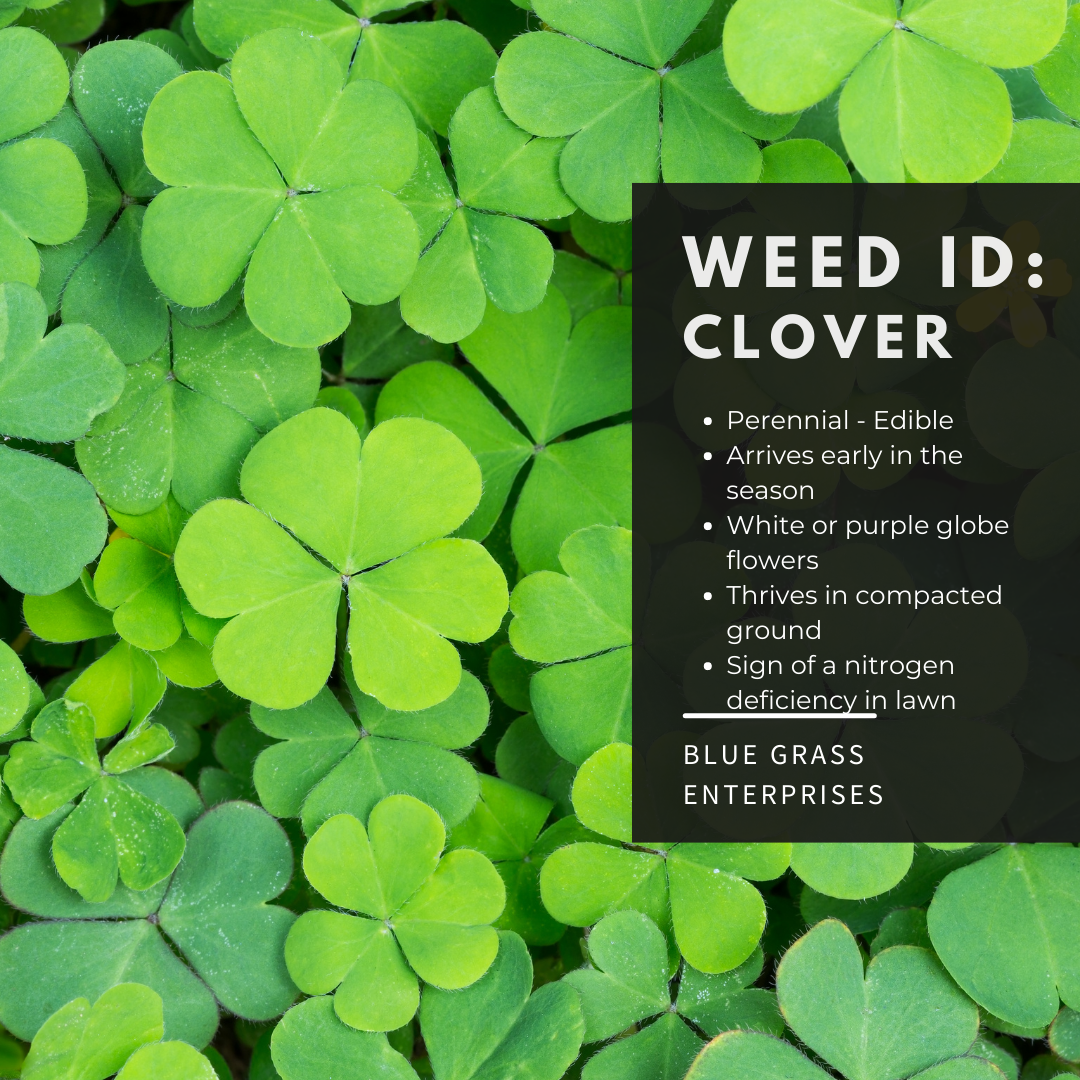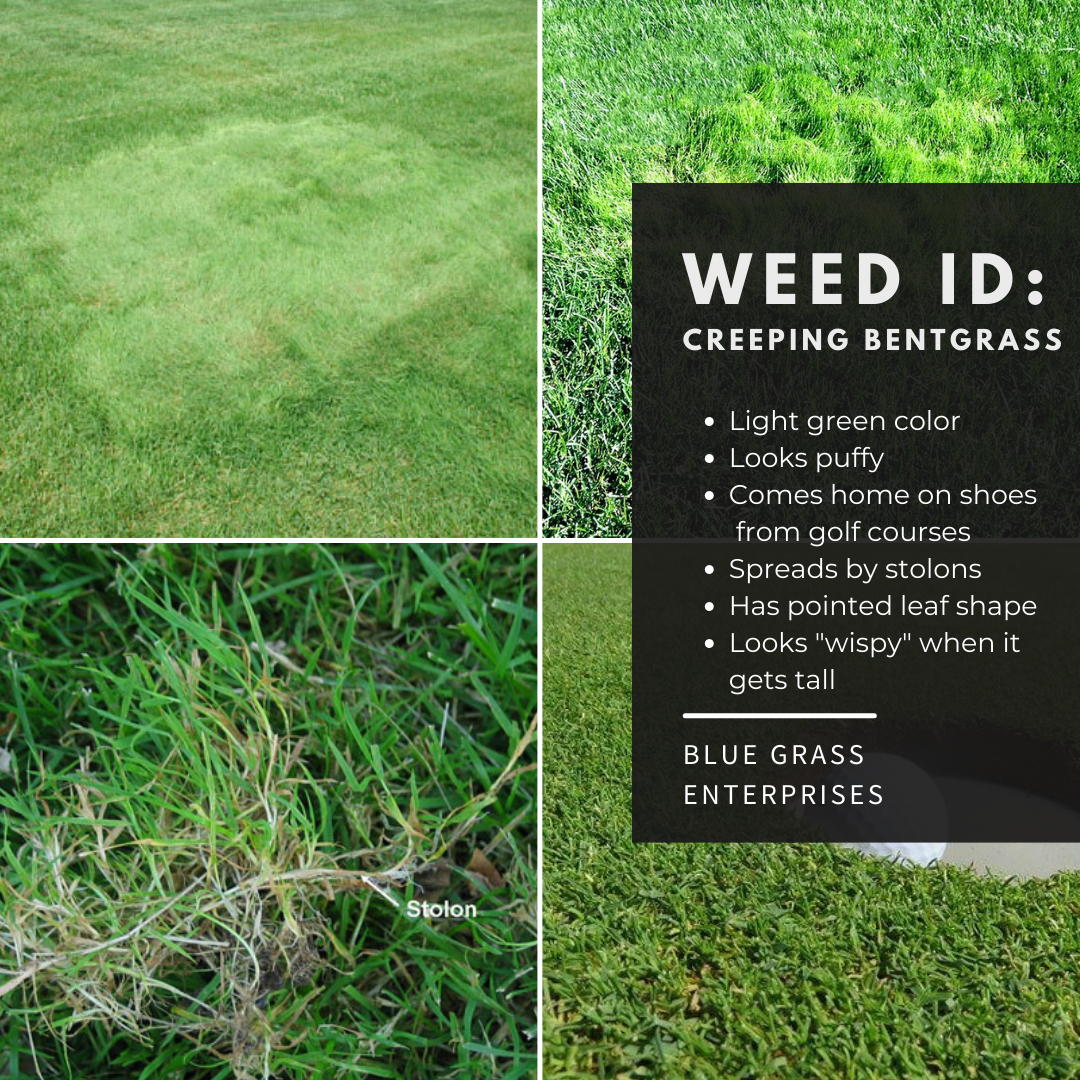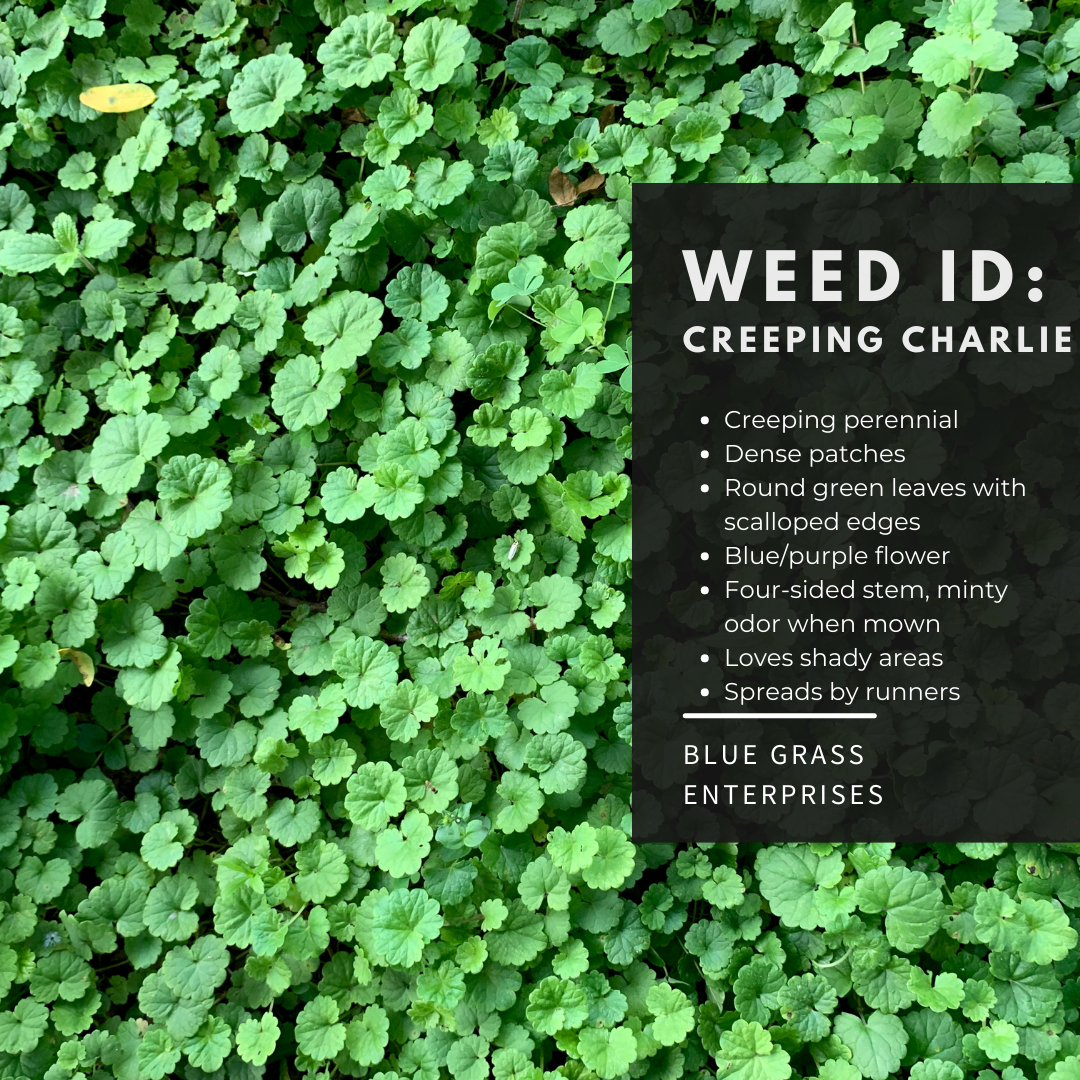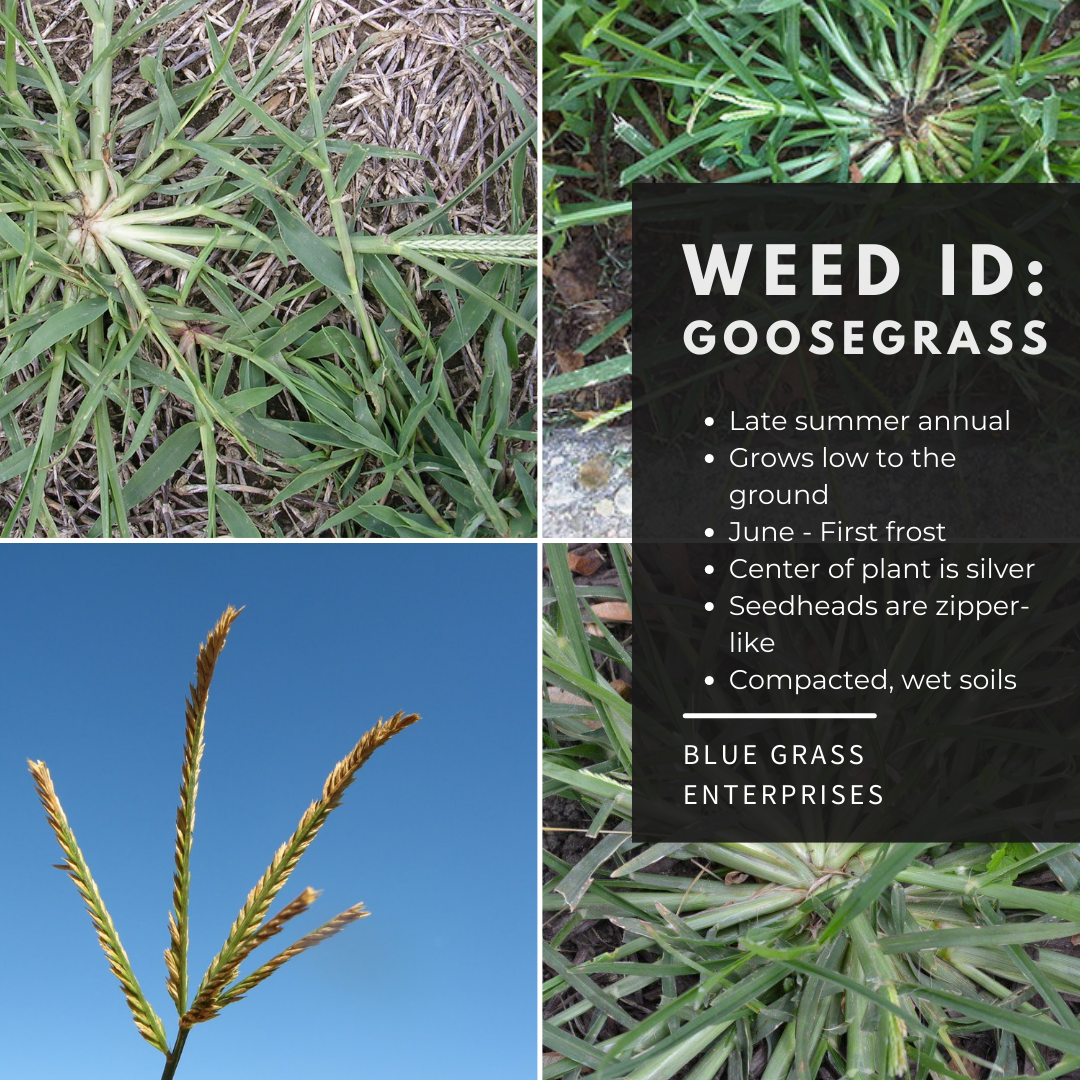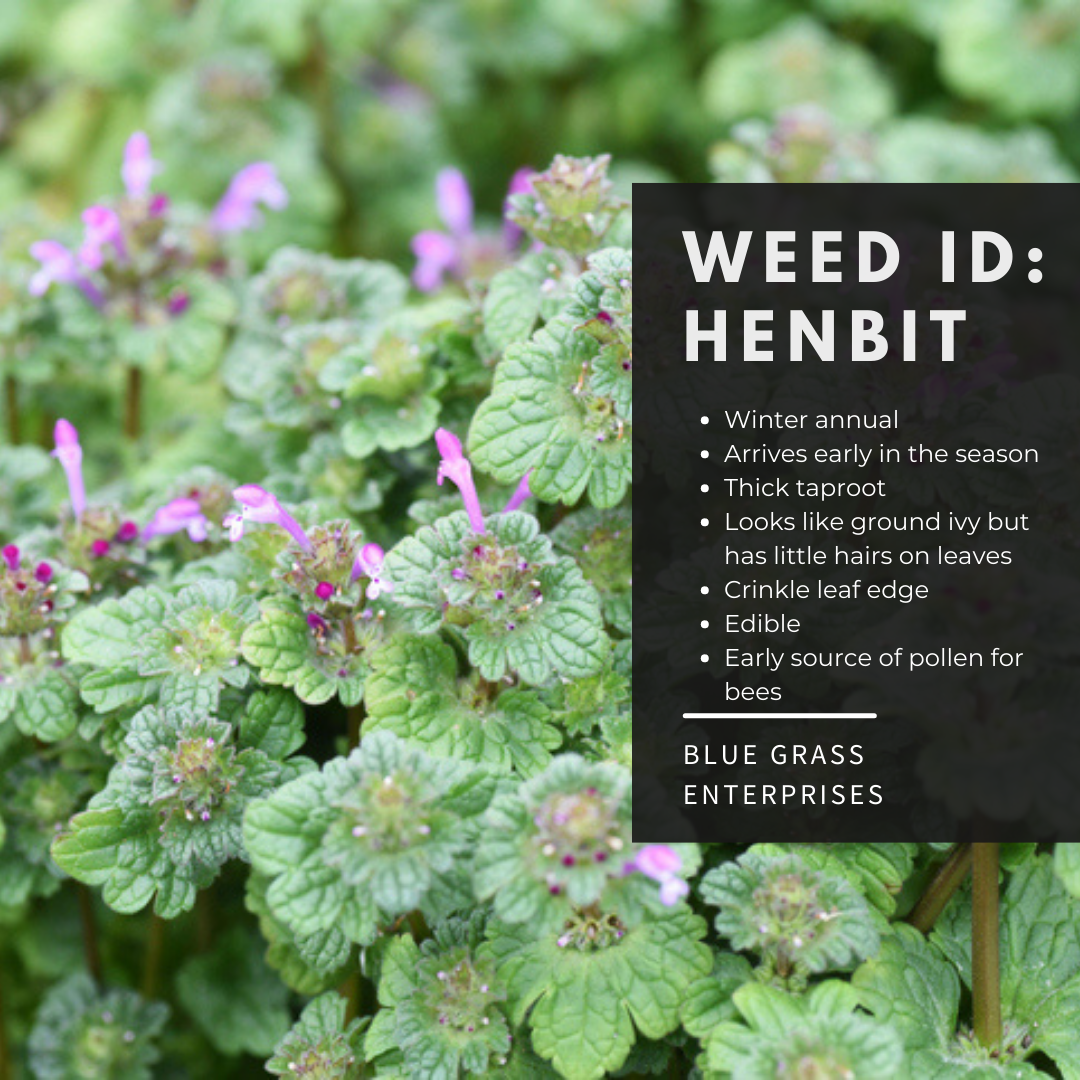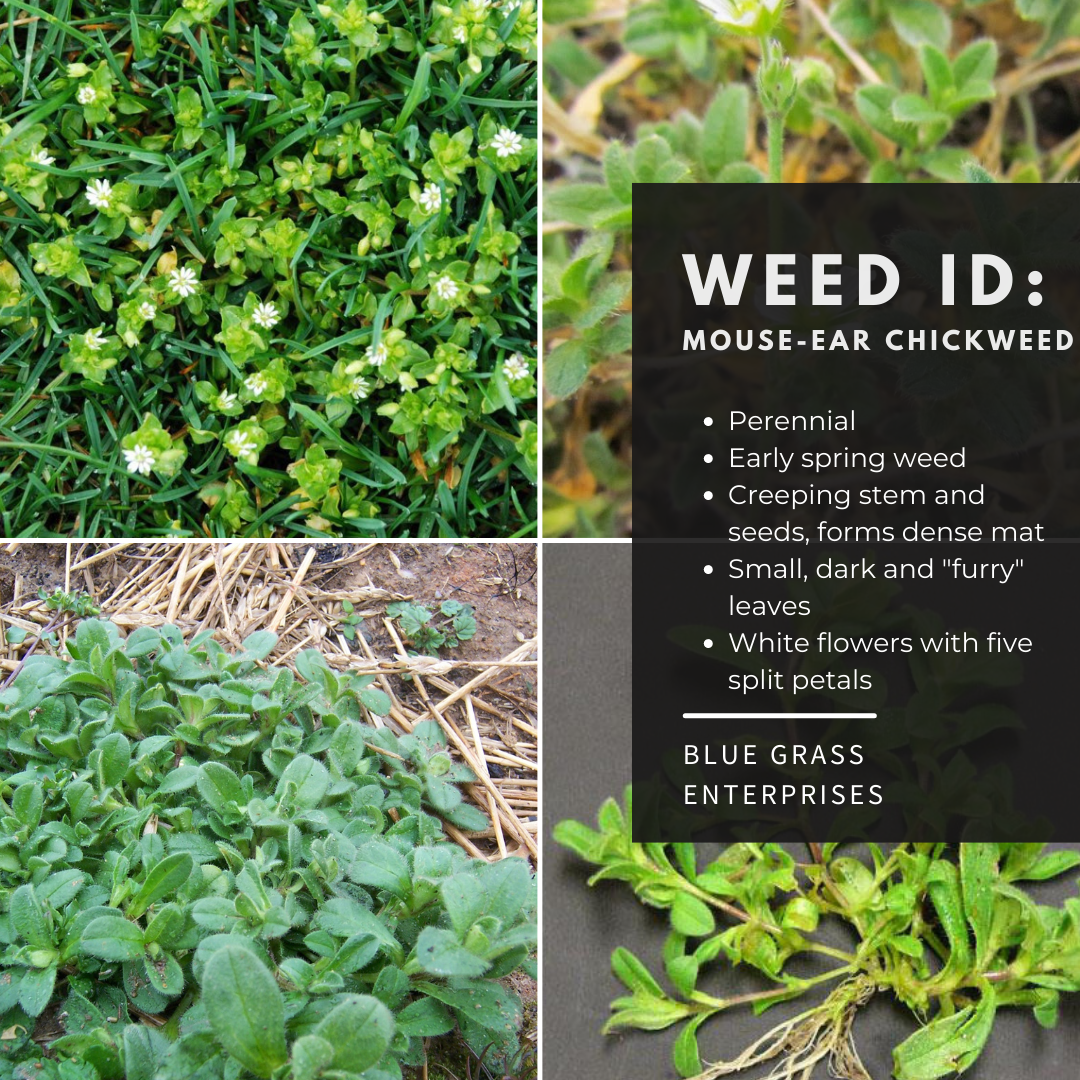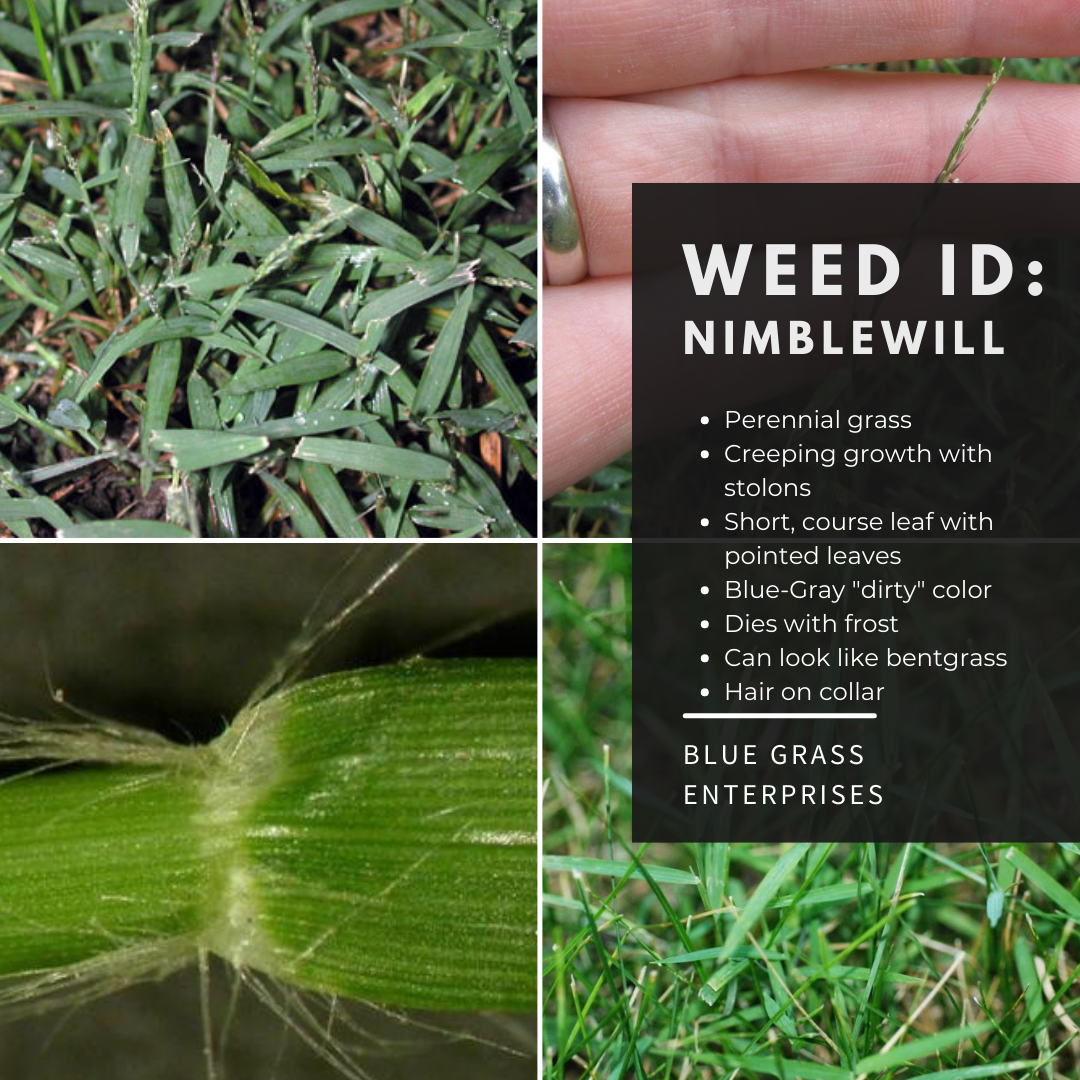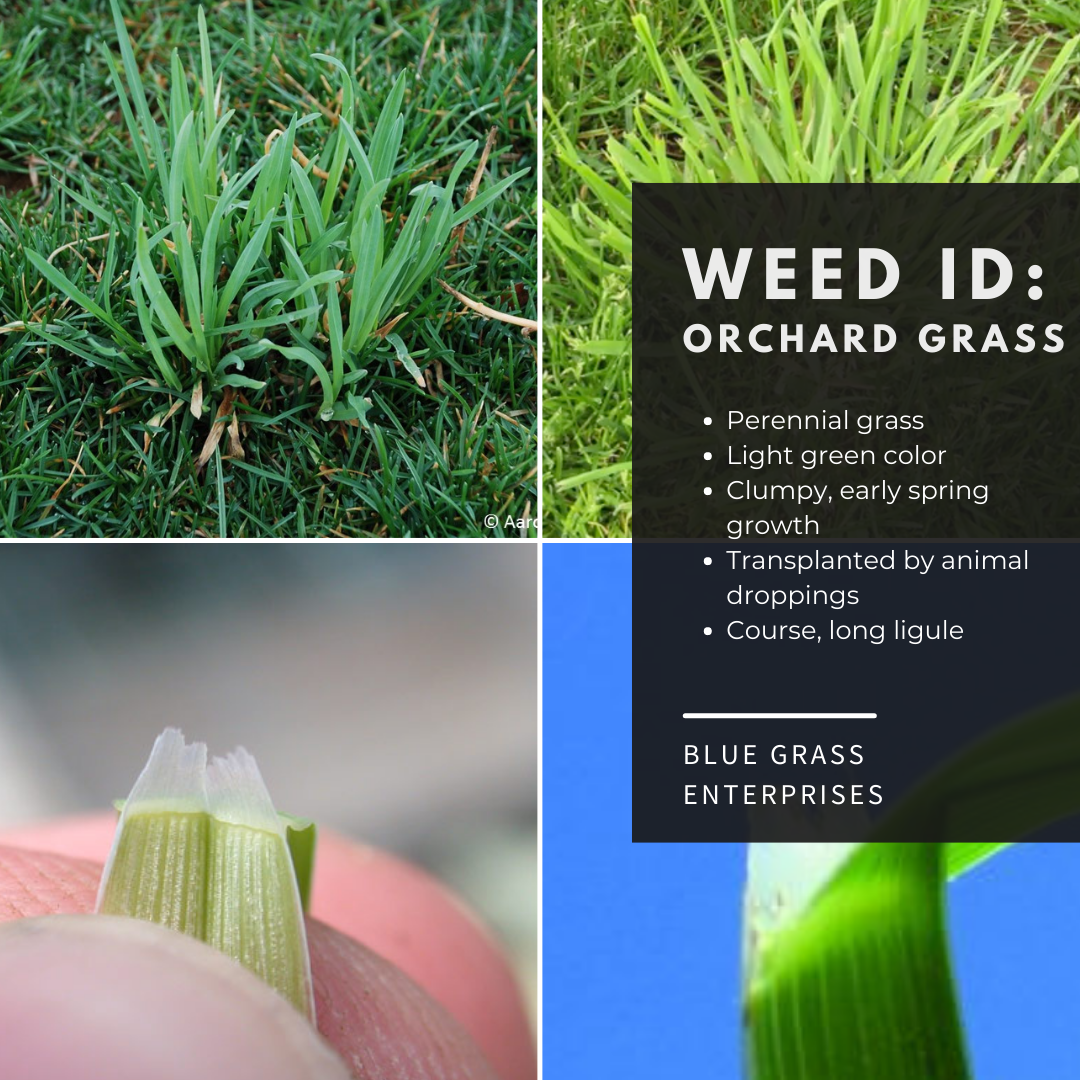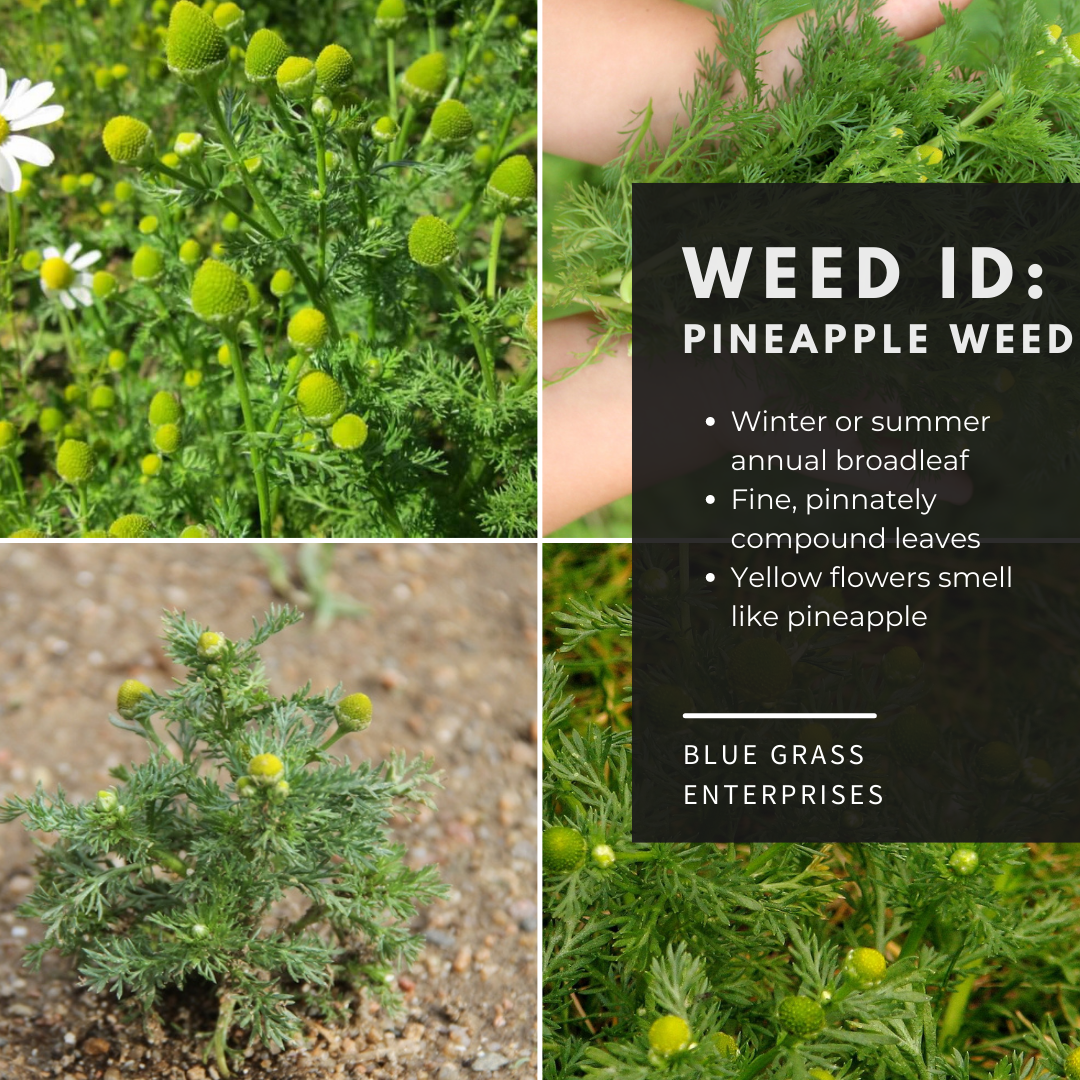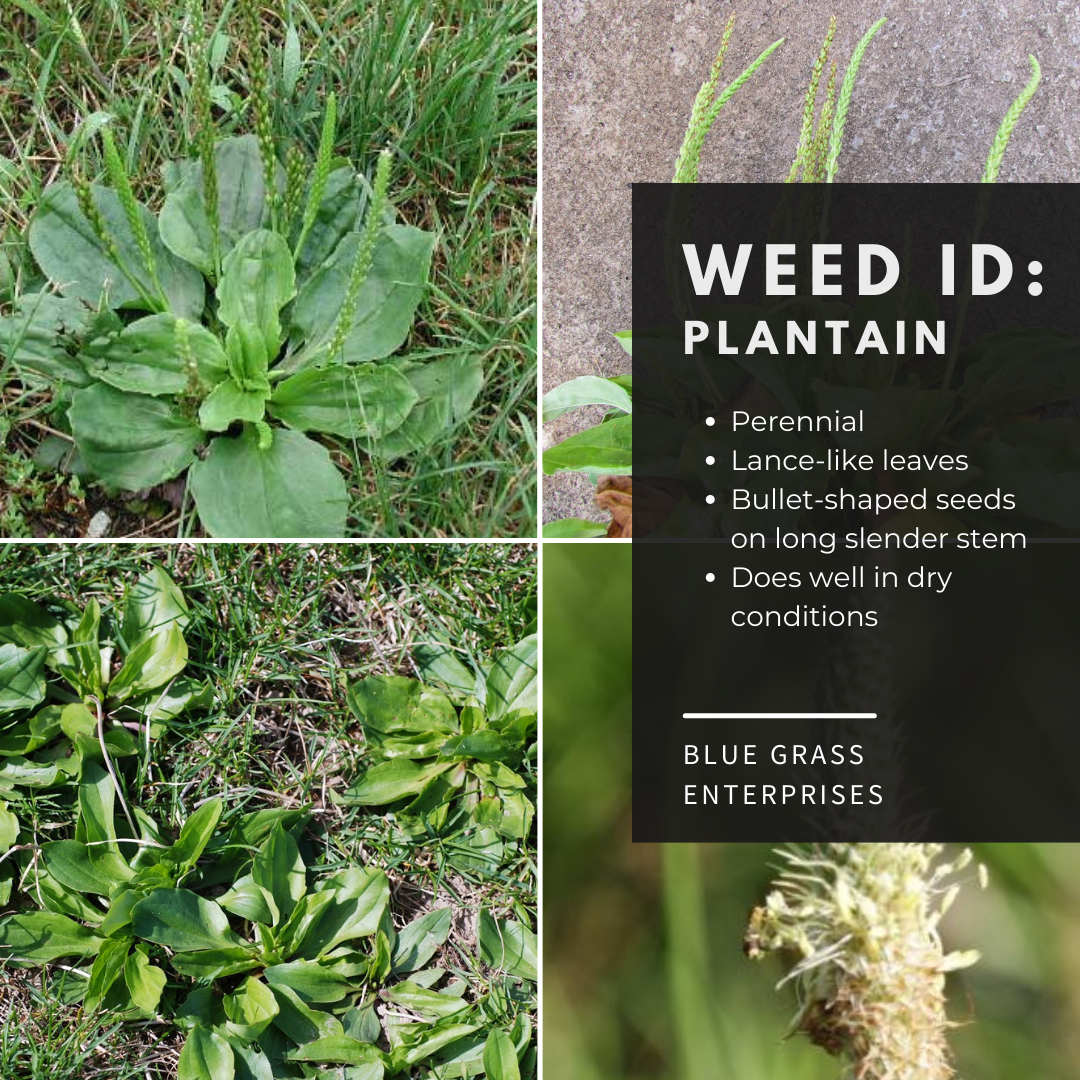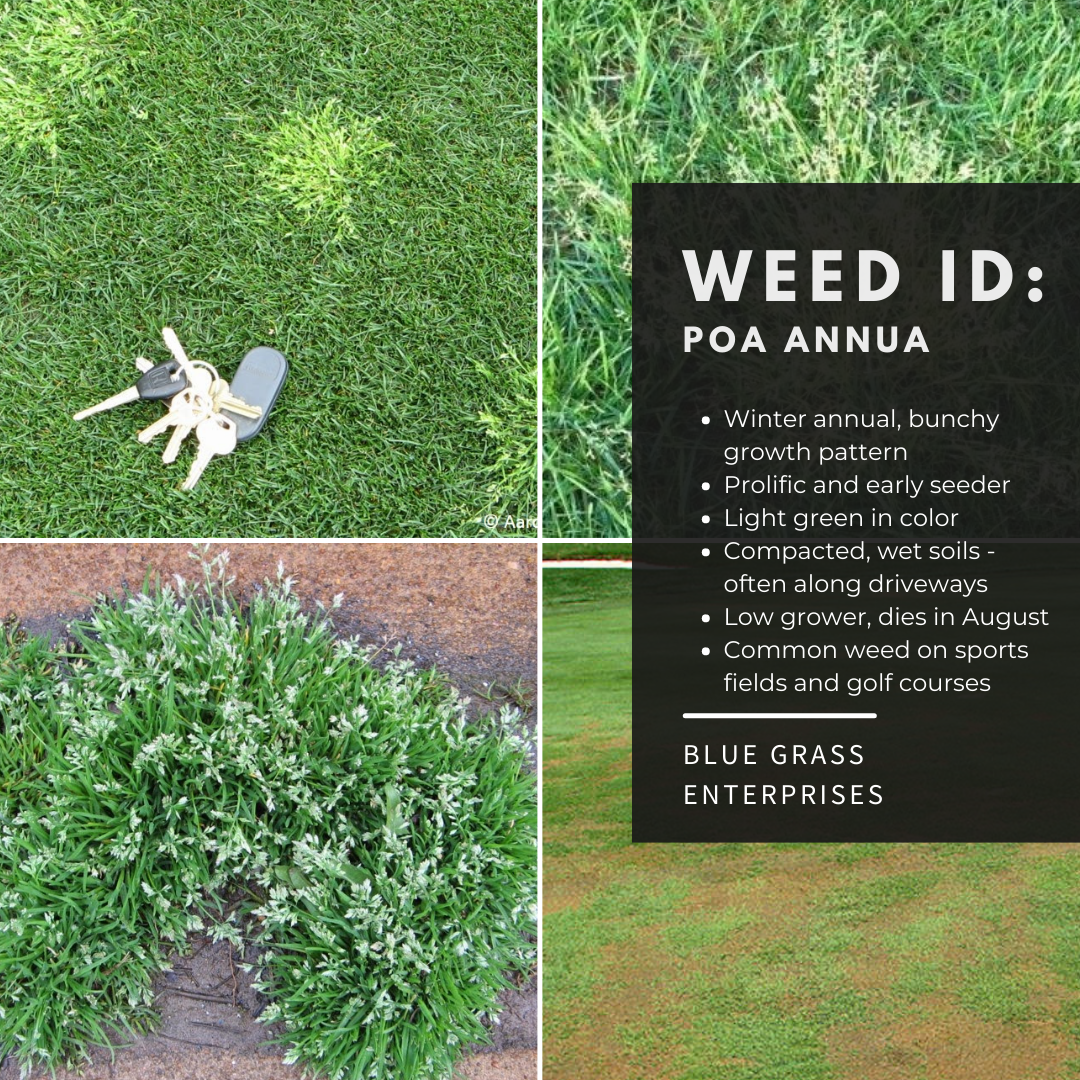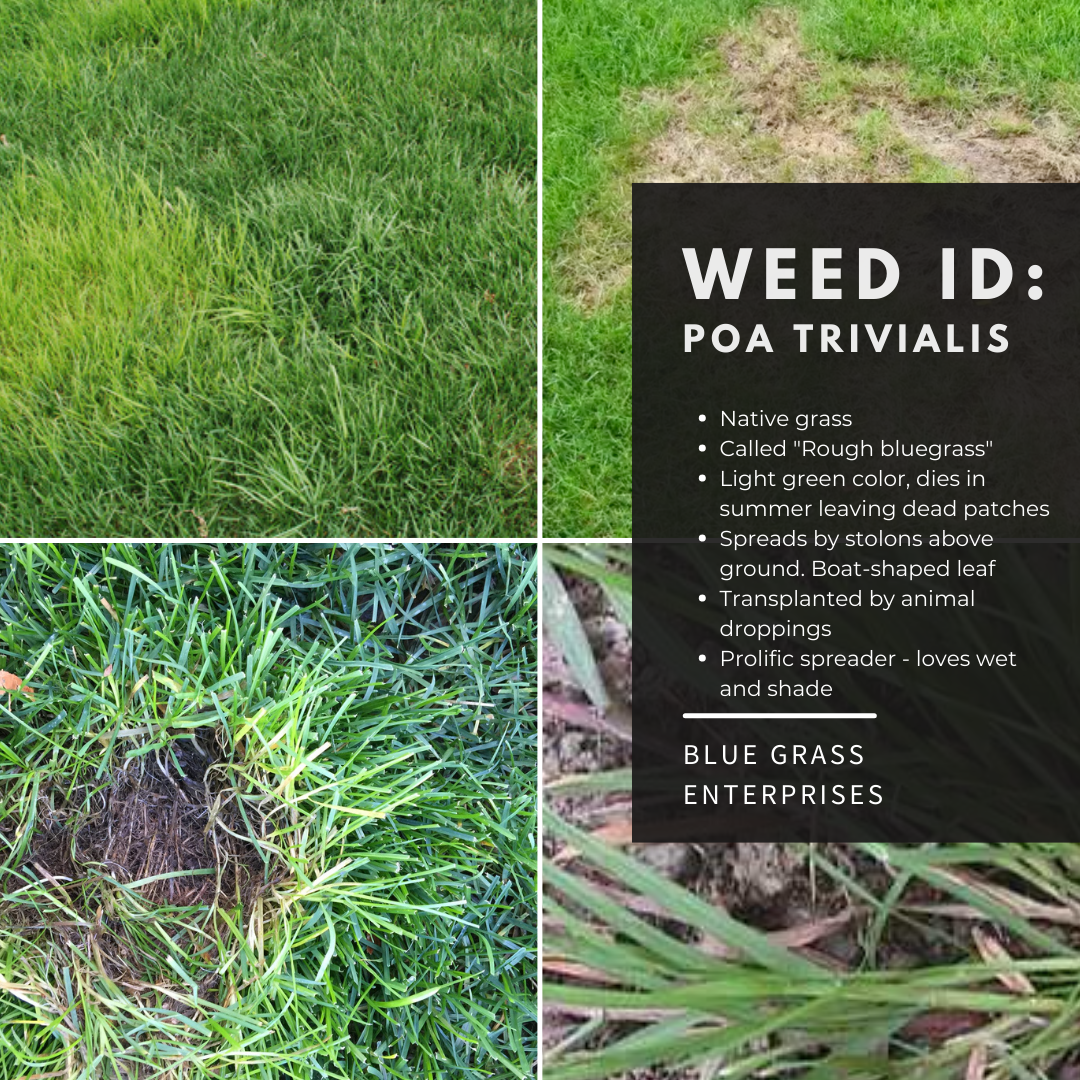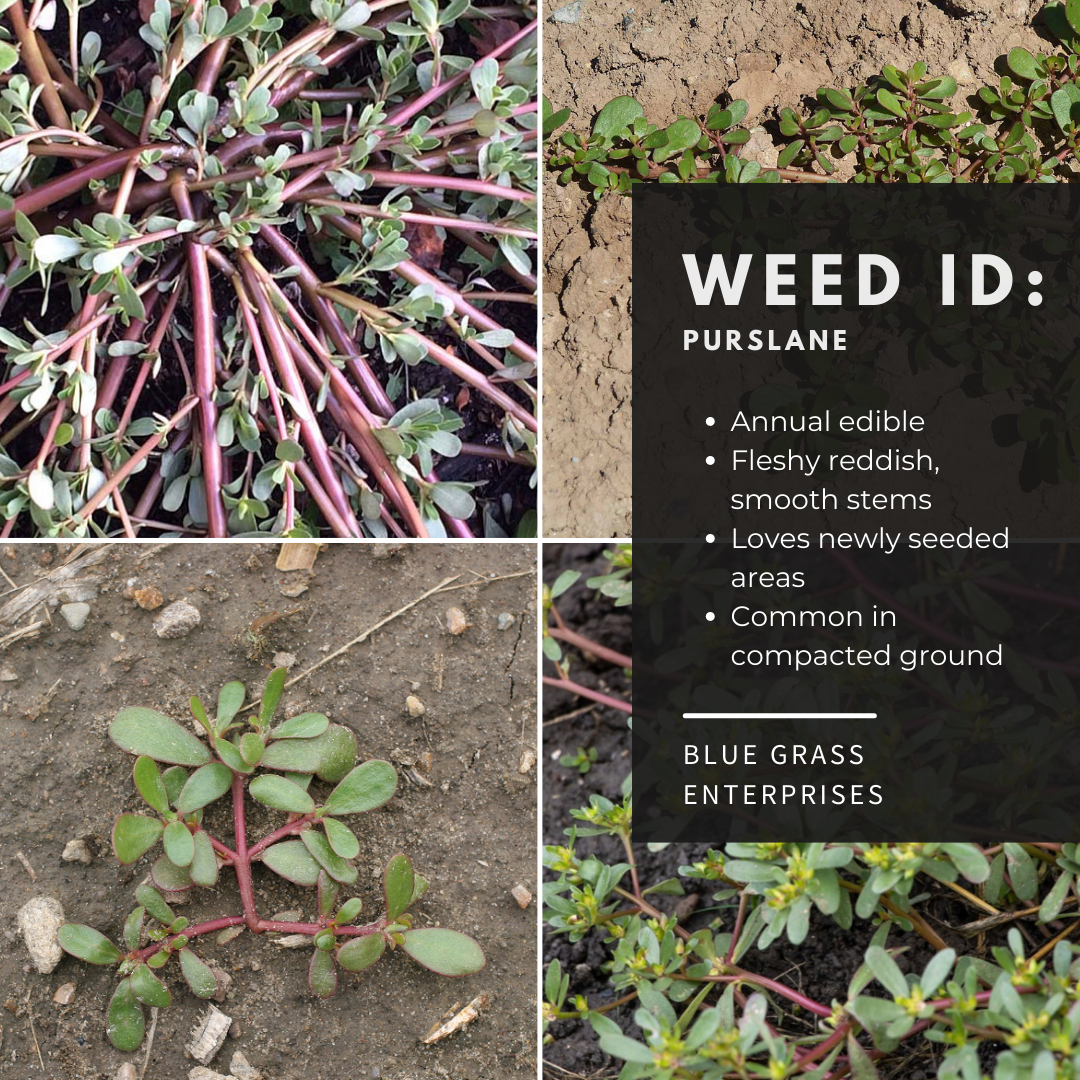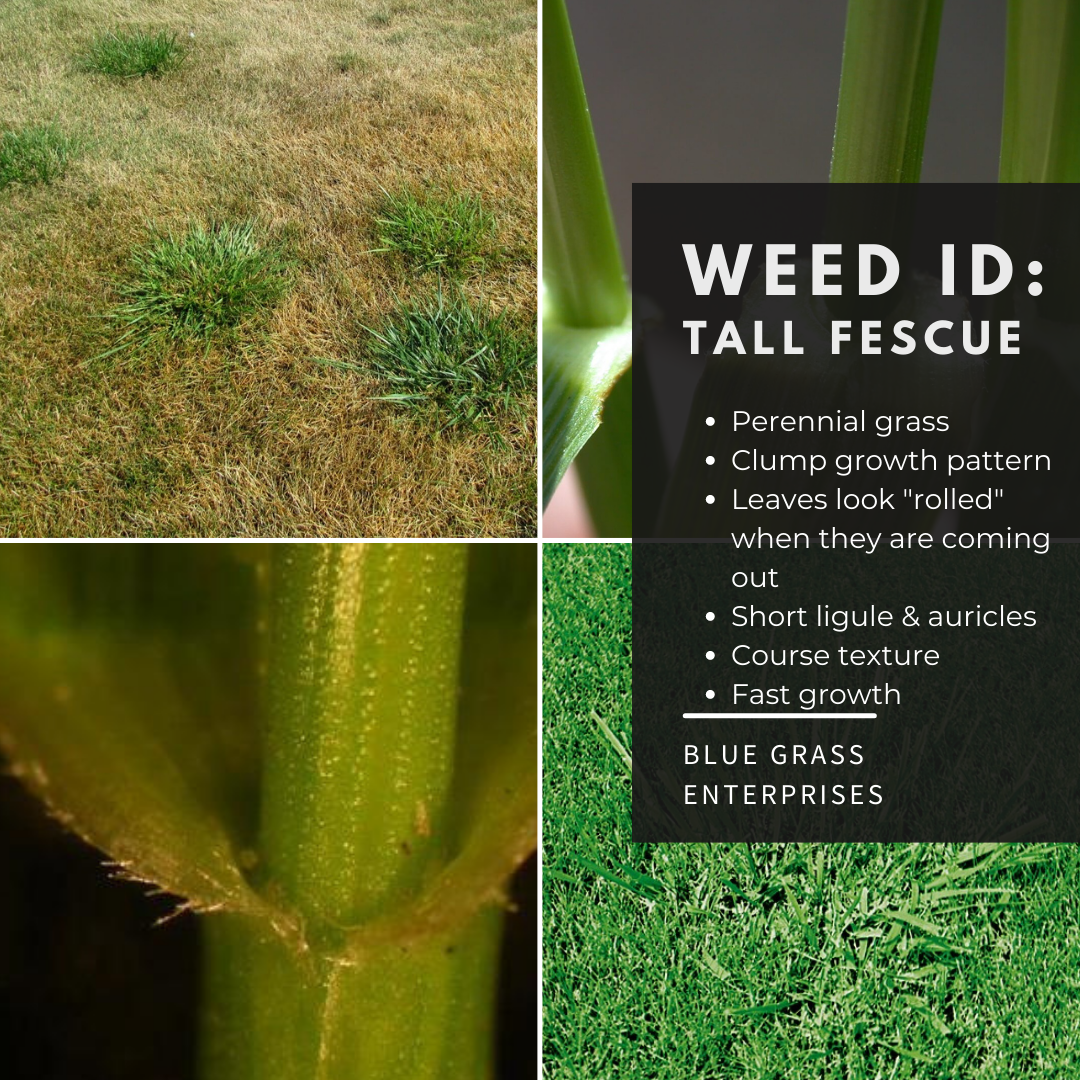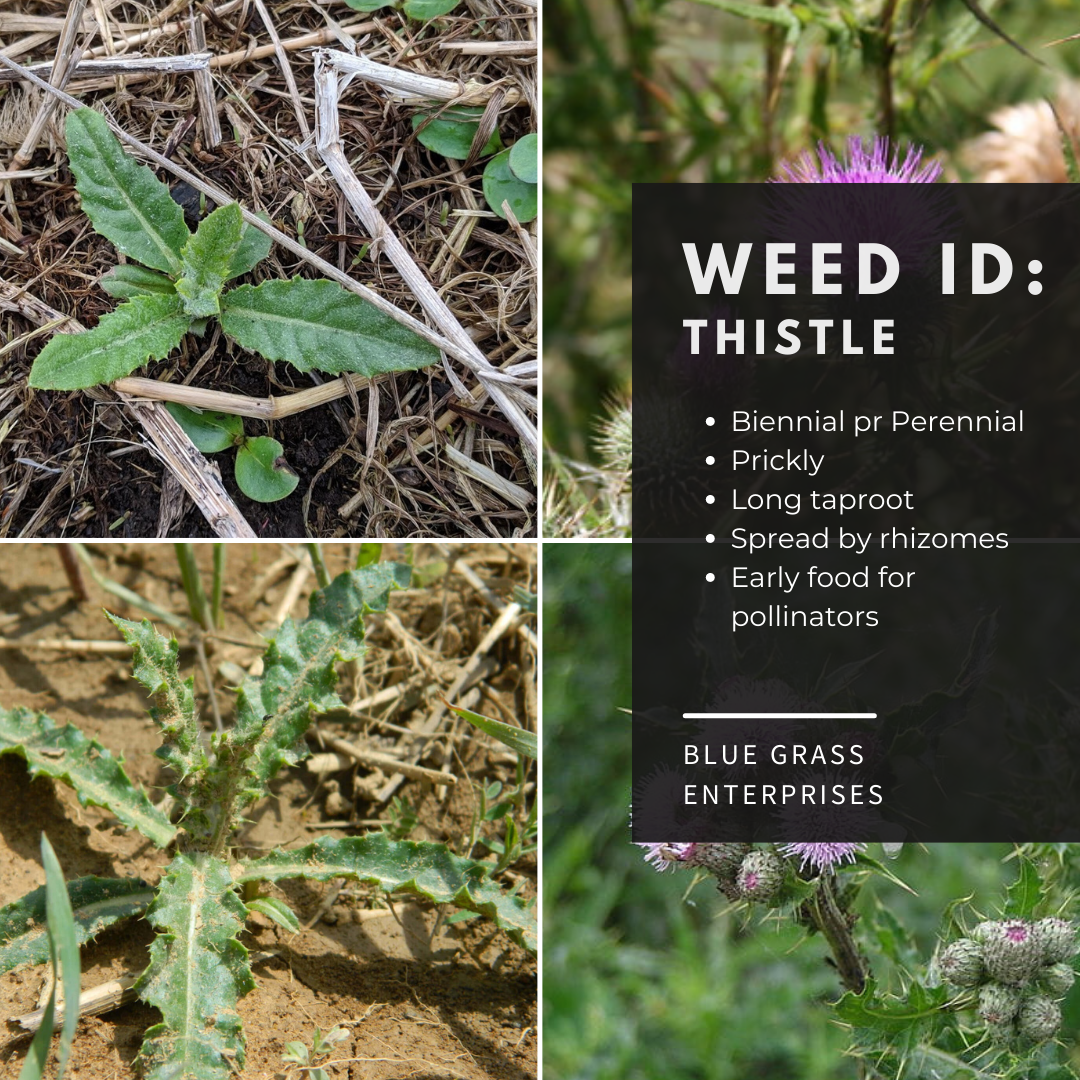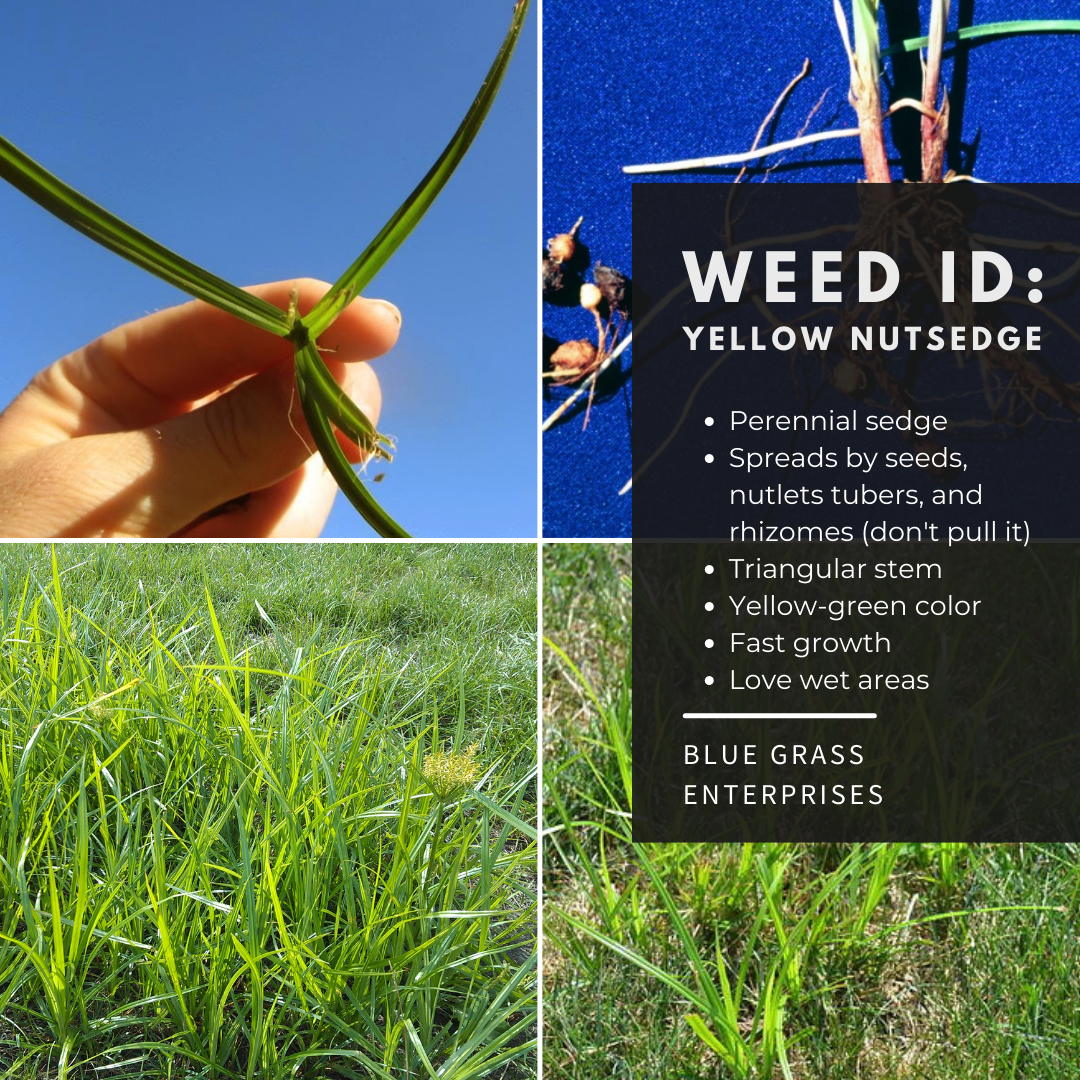Summer annual life cycle? Or accurate imagining of Sarah’s energy levels throughout the year? You be the judge.
Warm soil temperatures and summer stresses on cool season grasses give opportunities for summer weeds to spring forth! Over the years, we have addressed topics like Grassy Weed Control, but we thought you would appreciate more of a deep dive on each of these pesky little lawn invaders. Here is a brief rundown of some of the most common summer weed arrivals and how to deal with them.
So what is a summer annual? In short, a summer annual germinates in the spring or early summer, matures, and dies in the fall of the same year. Many of the crops we cultivate in the world are summer annuals.
In the lawn world, most springtime applications of crabgrass preventers also prevent common summer annuals from growing, as well. However, most crabgrass preventers are only effective for 3-4 months, so in the late summer/early fall homeowners start to notice summer annuals breaking through, especially along roadways, driveways, or thinner areas of the lawn.
Please note: In this article I borrow heavily from Purdue University professor, Dr. Aaron Patton’s, writing on annual weeds in the section on purslane, foxtail, and spurge. Dr. Patton is a wonderful researcher in the turf world and, frankly, a far better writer than I am when it comes to weed IDs. Thank you, Dr. Patton!
Big Spoiler Alert!! I’m going to write about methods of control first, because it applies to nearly everything in this article!
If Weeds 1-5 listed below are suddenly appearing in your lawn, you could consider putting down a second application of Step 2 (20-0-5 w/ Dimension), as your spring application is likely wearing off (thus the breakthrough of these weeds on your property). Note: we do NOT recommend putting down a second application of 32-0-5 w/ Dimension & Acelepryn, because it is far too late to put down a grub preventer (Acelepryn) and have any benefit. Save that product for next spring to get all of the goodie out of it! Give us a call and we will get you a bag of Step 2 with ONLY food and Dimension so you don’t waste your grubby efforts.
What if I want to kill them dead NOW!?
Step 4 (20-0-8 w/ Q3) that is applied in October will kill most summer annuals and can actually be applied any time. That said, Step 4 is most effective the later it goes down in the season, so October is really the sweet spot for application timing in Iowa. The most important thing to remember when using Step 4 is that it must be applied to wet leaves and then you do NOT want rain for at least 24 hours. This means it is best to apply Step 4 on a dewy morning.
Don’t have a lot of weeds? Read more about fall weed control and Step 4 options here.
The Mother Knows Best Approach Finally, you can simply wait for Mother Nature to do the killing for you, as all of these weeds will be killed by the first major frost. On average, the first killing frost in Iowa happens around the 15th of October.
Unfortunately, weed #6 (quackgrass) will not be killed by frost because it is not a summer annual. So if you think you have quackgrass, definitely read the linked article below to see what your options are. Yuck.
Crabgrass: Many, many people are familiar with this invasive species. Crabgrass is such a pain, it has the prestigious achievement of being one of the first weed-related articles we ever wrote.
Purslane: Common purslane is a summer annual broadleaf weed that is commonly found in low maintenance areas of a lawn, recently seeded areas, next to sidewalks and driveways, and in mulched beds and gardens. Purslane is a succulent plant with a prostrate growth habit and is one of the most common weeds in the world. Purslane can reproduce by both seed and stem fragments - so definitely don’t pull it! A single plant can produce as many as 240,000 seeds in a single year and seeds can be viable for more than 40 years. Like succulents, severed stems are able to form adventitious roots, which allows the weed to regrow from the stem or intact root fragments following cultivation. Additionally, purslane is an edible plant that can be found at farmer’s markets for use in salads!
Identification: A succulent broadleaf, purslane has fleshy, glabrous (smooth) leaves and stems. Leaves are green with a red margin, lack a petiole, and are rounded at the tip. Additionally, the leaves of purslane can be alternately arranged near the crown of the plant and become opposite or whorl-like towards the apex. Stems are plump, red in color, and originate from a central point to form a rosette. Prostrate spurge is a look-a-like weed to purslane. Prostrate spurge will have smaller leaves and stems and a more strictly opposite leaf arrangement than purslane. Additionally, spurge, like milkweed, will exude a white sap when the stem is severed.
Cultural control: Common purslane is generally not an issue in a healthy and well-established turf stand, but it can be found in thin or newly established areas. Thus, cultural practices that improve the competitive ability of the existing turf and/or promote the establishment of a new stand are the best methods of purslane management, prevention, and control.
Foxtail: Foxtails are summer annual grasses that emerge in late spring and throughout the summer. They grow as a loose clump, ranging from 1 to 3 feet in height, and reproduce only by seed. There are three common foxtail species that occur in the Midwest: giant foxtail (Setaria faberi); yellow foxtail (Setaria pumila); and green foxtail (Setaria viridis). All three species have a hairy ligule, no auricles, and produce the characteristic elongated seedhead (spike) that resembles a fox's tail. These species can be found in mixed patches in the same field. Giant foxtail has wider leaves and can be identified by the presence of dense short hairs on the upper surface of the leaf blade, also the seedhead droop in an arch shape. Yellow foxtail has very long hairs on the upper surface of the leaf blade near the collar region only, and the seedhead is compact with yellow bristles. Green foxtail is mostly hairless and the seedhead has green or purple-tinted bristles.
Foxtails can grow in moist or dry soils and tolerate a wide range of environmental conditions; thus, these weeds can be found in several habitats, such as row crops, pastures, turf, gardens, roadsides, ditches, or other disturbed areas. The Weed Science Society of America (WSSA) ranked foxtails (giant, yellow, and green combined) as the 2nd most common weed in broadleaf crops, fruits, and vegetables and the 4th most common weed among all grass crops, pasture, and turf.
Yellow Nutsedge - a very special unicorn of a weed - Yellow nutsedge is in a league all its own because it is not a grass or broadleaf weed, and therefore most common herbicides will not knock back a nutsedge invasion. This weed is so special we did an entire article on it earlier this year!
Prostrate Spurge - is a summer annual broadleaf weed that can be found in dry/sandy and/or nutrient-poor soils along with compacted, weakened, or disturbed turfgrass and landscape sites. Look for it first in driveways and sidewalks or in potted plants in a landscape or nursery as temperatures start to get warmer. Prostrate spurge can also be found in cultivated fields, brick walls, and parking lot cracks. It germinates from seed in June and July and spreads via low-growing prostrate stems that form a dense mat as they invade the turf canopy. Its ability to establish and grow in multiple soil/climate conditions and highly compacted soils, as well as its ability to withstand low mowing heights, make prostrate spurge a common turfgrass weed.
Identification: Low-growing plants like spurge are anchored by a central shallow taproot and, as suggested by its common name, it forms a ground-hugging mat with prostrate stems that grow outward throughout the turf canopy. The plant produces these spreading stems along with viable seeds very quickly, often within a couple of weeks after germination.
The leaves of prostrate spurge are pale green, hairy, egg-shaped, widest at the apex, and located opposite of each other on the stems which are pinkish in color and distinctly hairy. Prostrate spurge continually flowers from July to September and produces large quantities of viable seed throughout its life cycle. These flowers are small but numerous, originate from the base of the leaves located on the upper stem, and are composed of several male and female flowers within a cluster. It produces a fruit that consists of a 3-lobed, 3-seeded capsule with stiff hairs on its surface.
Additionally, all spurges exude a milky/white sap when damaged which can be toxic to animals if ingested.
Cultural control: Proper turf management such as adequate mowing heights, irrigation, and fertilization will help to produce a dense, aggressive turf which is the greatest defense against invading weeds. Prostrate spurge also thrives in compacted soils; thus, soil cultivation (core aeration) may aid in the management of the weed. Due to its shallow taproot, prostrate spurge can often be hand pulled when populations are small enough; however, it is important to remove this weed as soon as possible due to its ability to produce copious amounts of viable seed very quickly after germination.
Quackgrass - Finally, the biggest bad guy of them all. If you are unlucky enough to have quackgrass on your lawn, you will definitely want to read this article.
Finally, don't forget we have a lovely Weed ID resource (pictured on the right because it is so pretty!) on our website whenever you want to figure out what is growing around your property.
Crabgrass
Purslane
Yellow Foxtail
Yellow Nutsedge
Spurge
